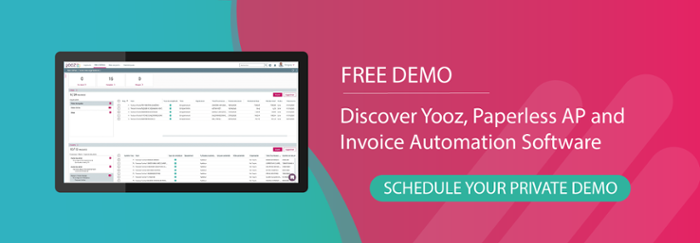Quick, do you know the difference between 120.67.0004 and 17/4/6.2 or do you have to look it up?
Whether you are an Accounts Payable (AP) pro or just learning financial ropes as the owner of a small business, coding invoices is an essential part of quick and correct processing. But what does coding invoices really do and why bother?
Coding invoices is a task traditionally done by hand, requiring staff to go through all incoming invoices and assign them the proper General Ledger (GL) code. These invoice codes - typically a string of numbers and letters - do everything from helping to organize expenses and track spending to complying with regulatory requirements. They help to identify specific vendors and which accounts to credit or debit.
The emphasis is on “traditionally” however, since a growing number of businesses are embarking on digital transformation as a means of streamlining their entire purchase-to-payment workflow, including the process of coding invoices. This means doing away with as many manual, paper-based steps as possible and replacing humans with automation.
After all, since receiving, sorting, and coding invoices happens at the very start of the AP automation process, the journey to improved efficiency and sizable cost savings begins right there with them. And that means properly coding your invoices for fast and error-free processing.

Humans Are a Drag on Invoice Processing
There is no uniform or prescribed way of coding invoices, just as there is no obligatory method for invoice processing itself. Instead, each organization relies on its own coding system that’s a reflection of unique requirements and accounting practices built up over time. Sometimes, coding involves just the Purchase Order (PO) number. Sometimes it follows a more elaborate scheme in order to connect invoices to the corresponding GL accounts. Sometimes - usually the unfortunate ones - it doesn't follow any real system at all.
Regardless of the way in which it happens or in which department it occurs, coding typically includes information such as:
- posting date,
- due date,
- items delivered,
- parts numbers
- supplier numbers that have to match a vendor master list.
That can be a lot of information to transfer into system by hand, especially for larger organizations dealing with hundreds or even thousands of invoices. Which means that, as long as humans are in charge of handling this process, it is prone to potential errors and mistakes. And what may seem a simple mistake can have a snowball effect across an entire organization. For example, a simple typo or omitting a single digit can hold up the invoice process and create cascading problems as the invoice makes its way through review, approval, and eventually being scheduled for payment.
Coding invoices also comes with its own learning curve due to its inherent complexities. New hires need to get used to the specific coding system and will spend precious time looking up unfamiliar alphanumeric strings. Add staff turnover to the equation and you’ll quickly realize that manual coding is a time-consuming, losing proposition.
Making matters worse, manual coding does not scale well as your business grows and as previously mentioned, the volume of invoices keeps going up. Or it can grind to a halt when a seasoned staff member calls in sick and someone else must jump in, trying to clear the backlog.
Why Software Excels at Invoice Coding
Which begs the question: Why, if humans are responsible for dragging down the invoice process, not just let software perform this tedious, repetitive yet crucial task? The reality is that while many companies already use software to enter invoices into their financial system itself, not all leverage the additional power of automated GL coding. They should because this process works well even if a business doesn’t have an Enterprise Resource Planning (ERP) system in place because it’s simply too small or hasn’t implemented one yet.
In contrast to humans sorting, coding, and plugging data into a system, AP automation software can take the guesswork out of the workflow. It will automatically capture and read all invoices, then correctly match them to the right PO or other relevant documents (such as a note of goods received) in a split-second, all without human intervention. At the same time, intelligent automation doesn’t require the AP team to change things around or learn new tricks.
Also, state-of-the-art software is flexible enough to quickly learn and adhere to any unique GL coding scheme an organization has refined as its best practice, and it can easily be adjusted and tweaked.
How Cloud-Based Invoice Coding Gets Smarter All the Time
Reaching this state of enlightened coding is not that difficult. A cloud-based platform for AP automation will start capturing invoices and correctly assigning GL codes for most documents as soon as it is up and running. It won't get tired, it won't need a break, and it won't forget. A few tweaks as you go will quickly improve the system’s accuracy and speed that far surpass the capabilities of any human. No further need to have staff memorize the right codes or consulting look-up tables, no more worrying.
As a result, AP clerks will finally have the time to focus on other, more strategic or high-value tasks such as reviewing and resolving exceptions - also quickly identified by the automation software - or focusing on managing vendor relationships. In a time when supply chains are unstable and inflation rising, focusing on vendor and customer service are some of the ways of ensuring operating stability.
The Benefits of Automated Invoice Coding at a Glance
While having an automated approach for coding invoices sounds great, there is always the question of 'is this really worthwhile' or 'is it worth the cost'? The answer is yes, there are plenty of obvious and not-so obvious advantages.
First, operational excellence goes beyond paying on time, every time. Having a smart platform perform the task of coding invoices makes manual labor a thing of the past, boosts employee participation in strategic endeavors, and a host of other means of boosting productivity and efficiency including:
-
Higher accuracy - Fewer errors and mistakes, reducing the number of exceptions and costly, time-consuming corrections
- Greater security - Lower risk of fraud
- Increased speed, lower cost - Accelerate processing, validation, and approval at a significantly lower cost per invoice
- Visibility - have the ability to see in real time where your money is going (and when), giving timely insights to drive better strategic decisions
- Promptness - Paying on time, every time
- Visibility – be able see in real time where your money is going (and when), giving timely insights to drive better strategic decisions
- Improved relationships - Better and stronger relationships with suppliers
Second, in addition to real-time visibility, generally speaking GL coding provides an important data set that extends far beyond making sure that all invoices are paid on time. This data becomes a key information center to empower an entire organization to search a query a live data set built from all B2B transactions. It serves as a valuable resource to help management track spending, discover new opportunities to save costs, renegotiate supply terms, and even establish overall strong internal controls to mitigate risks.
The bottom line? Once you don’t have to worry about every single invoice being captured and coded correctly, it’s a whole new game.







